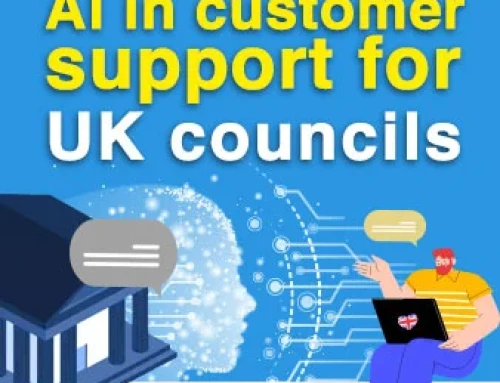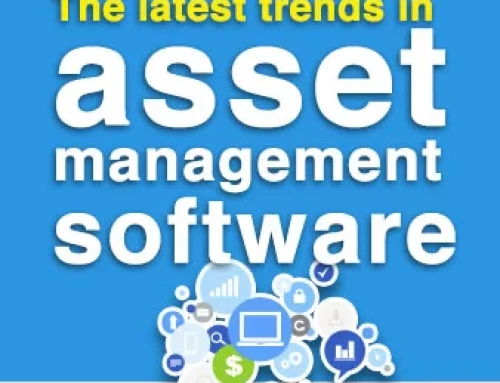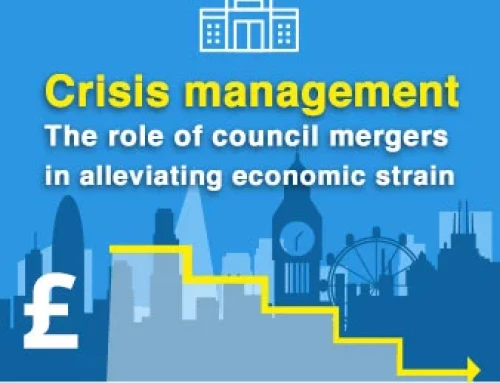How UK councils can leverage technology to sustain services
Navigating the economic challenges
The economic landscape in the United Kingdom has witnessed significant fluctuations in recent years, and its impact on local government bodies, such as councils, has been profound. These councils play a pivotal role in delivering essential services to communities across the country. However, economic challenges, including reduced budgets, inflation, and the need for greater efficiency, have forced UK councils to reevaluate their operations and adopt innovative solutions. One such solution is the strategic use of technology to save costs, streamline operations, and ensure the efficient delivery of services.
Harnessing technology for cost savings
In an era where budgets are under constant scrutiny, UK councils are under pressure to reduce expenditure while maintaining the quality and accessibility of their services. Technology can be a powerful tool in this endeavour. Let’s delve deeper into how councils can leverage technology for cost savings:
a. Automation and process optimisation
Automation has been a cornerstone of operational efficiency for years, but with AI, it has reached a new level of sophistication. AI-powered systems are capable of handling complex tasks that were once reserved for human employees.
AI systems are not only capable of automating tasks but also of taking action based on predefined rules. These rules engines can be customised to respond to specific events or conditions, allowing organisations to operate more efficiently.
One of the most significant advantages of AI in process optimisation is its ability to keep all relevant stakeholders informed without manual intervention. This is particularly crucial in the public sector where real-time updates are vital.
Implementing automation in administrative tasks, such as service request analysis or document handling, can lead to significant cost reductions. Automated systems not only reduce the need for manual labour but also minimise the risk of errors, saving both time and resources. Moreover, automation frees up staff to focus on more value-added tasks, ultimately improving service delivery.
The expected global expenditure on digital transformation is estimated to reach a total of 3.4 trillion U.S. dollars by 2026.
b. Digital communication
In today’s digitally interconnected world, the significance of seamless digital communication cannot be overstated. As technology continues to advance, organisations are increasingly acknowledging the pivotal role that apps play in facilitating effective and efficient communication. Digital communication apps provide a user-friendly and convenient platform for individuals to register, report incidents, and stay updated, all while contributing to significant cost reductions traditionally associated with staff-intensive contact centres.
Historically, traditional contact centres have represented substantial cost centres for organisations. However, the adoption of digital communication apps offers a practical solution to reduce operational expenses while concurrently enhancing the quality of communication and support provided. Among the most notable advantages of digital communication apps is their capacity to deliver real-time updates and notifications, particularly beneficial in scenarios where timely information holds paramount importance.
Furthermore, embracing digital channels for communication with constituents can significantly mitigate the costs linked to conventional paper-based communication methods. Platforms such as online portals, mobile apps, and email not only enhance engagement but also lead to considerable savings by reducing expenditures associated with printing and postage. Moreover, this digital approach empowers local authorities to reach a broader audience and elicit valuable feedback, enabling a more focused and cost-effective delivery of services.
The evolution of digital communication has become a fundamental aspect of modern organisational strategies, ensuring that efficient and cost-effective channels of interaction are seamlessly integrated, serving the needs of both local authorities and their constituents.
c. Cloud computing
Adopting cloud-based solutions can help councils reduce the costs of maintaining and upgrading on-premises IT infrastructure. Cloud services offer scalability and flexibility, enabling councils to pay only for the resources they use. This not only lowers capital expenditure but also allows for better resource allocation. Additionally, cloud solutions facilitate remote work, which can lead to reduced office space costs and greater flexibility in staffing.
Gartner reports that the mainstream adoption of emerging technologies is propelling cloud spending.
Tailored software for efficient service delivery
Efficient service delivery is crucial for councils to meet the needs of their communities effectively. To achieve this, councils should consider investing in tailored software solutions designed specifically for their unique requirements. Let’s explore how tailored software can be a game-changer:
a. Integrated platforms
Customised software platforms can effectively integrate various functions, from managing essential services like social services and housing to overseeing waste collection and public safety. This seamless integration not only bolsters efficiency but also provides a unified platform for all council operations. It encourages streamlined coordination among departments, creating a seamlessly integrated experience for both council staff and residents.
The My Council Services platform offers a comprehensive, all-in-one platform that covers an extensive array of public services, including Waste Management, Licensing, Allotments, Booking systems, Freedom of Information (FOI) requests management, Regulatory services, and more. The core of our unified approach lies in our proficiency with integrations and web services, ensuring that data flows in and out accurately, promoting a holistic view of operations, and significantly simplifying field service management. This approach reduces the need for multiple systems, making operations more efficient and cost-effective.
We are currently in the process of enhancing our offerings to better serve UK local government. In particular, we’re actively developing the latest iteration of our customer portal, version 5.0. This new version brings significant improvements in terms of usability and incorporates Government Digital Service (GDS) components. It’s designed to serve as a comprehensive website replacement for local authorities, ensuring an enriched digital experience for all.
Moreover, our development team is diligently working on the creation of smart asset sensors utilising cutting-edge IoT (Internet of Things) technology. These technological advancements will play a crucial role in enhancing the efficiency and effectiveness of service delivery, including our business portal, highways, and streetworks modules. Our overarching goal is to provide local councils with a seamless and highly efficient digital transformation experience.
b. Streamlined processes
Tailored software can be designed to streamline specific processes within a council, eliminating redundancies and improving workflow. For example, it can automate the scheduling of waste collection routes based on real-time data, optimising route efficiency and reducing fuel costs. This not only reduces operational expenses but also enhances service quality by minimising disruptions.
c. Data analytics
Customised software can incorporate advanced data analytics capabilities, allowing councils to make data-driven decisions, optimise resource allocation, and identify areas for improvement. By harnessing data, councils can better understand the needs of their communities and tailor services accordingly, thereby maximising the impact of their limited budgets.
Greater efficiency through merged councils: Staff and resource utilisation in a transformed landscape
In an era of economic challenges and increasing pressure on public services, the prospect of merged councils in the UK offers a promising path forward. Merged councils represent a strategic shift in local governance, as several smaller entities combine their resources and administrative functions to create more efficient and cost-effective structures.
One of the primary motivations behind merging councils is the pursuit of greater efficiency. The future of local governance in merged councils is expected to be characterised by streamlined administrative processes, reduced bureaucracy, and optimised resource allocation. Here are some key aspects to consider:
Leaner staff structures:
Merged councils often result in a more streamlined approach to staffing, reducing redundancies and optimising personnel allocation. This, in turn, is expected to lead to significant cost savings.
Resource optimisation:
With the consolidation of administrative functions and service delivery, merged councils can allocate resources more effectively, addressing community needs with precision and minimising waste.
Economies of scale:
Merged councils can leverage economies of scale to procure services and goods at a lower cost, stretching their budgets further and enhancing service delivery.
Impact of economic challenges
The impact of the current economic climate on UK councils cannot be overstated. Several factors are contributing to the financial strain on these local government bodies:
a. Staff reduction
Economic pressures often lead to the need to reduce staff, which can impact service quality and the ability to respond to community needs promptly. However, through the strategic use of technology, councils can mitigate some of the adverse effects of staff reductions.
b. Increased efficiency
With limited resources, councils are compelled to become more efficient in their operations. Technology plays a pivotal role in achieving this efficiency. For example, GIS (Geographic Information Systems) technology can optimise the routing of maintenance crews, ensuring that essential services are delivered in a timely and cost-effective manner. The implementation of digital workflows can also reduce paperwork and administrative overhead.
c. Reduced tax revenue
Inflation can erode the purchasing power of taxpayers, leading to reduced tax revenues for councils. This, in turn, results in smaller budgets for essential services. In response, councils must carefully prioritise their spending and explore innovative ways to maintain service quality. Technology investments that yield cost savings over the long term can be a crucial part of this strategy.
d. Balancing act
Councils must navigate the delicate balance between cost-cutting measures and maintaining service quality. Technology-enabled solutions can help strike this balance effectively. By adopting a data-driven approach, councils can identify areas where investments in technology can yield the most significant cost savings without compromising essential services.
An efficient, responsive, and resilient local government
In these transformative times, UK councils find themselves at a pivotal juncture, where the demand for fiscal responsibility meets the imperative to provide essential services efficiently. The adoption of technology is not just a matter of choice; it’s a strategic imperative for councils to navigate these challenges successfully.
As we’ve explored, technology provides the means to automate tasks, enhance communication, and optimise resources. It empowers councils to do more with less, achieving a delicate balance between fiscal prudence and maintaining service quality. The resilience and adaptability of councils in the face of economic uncertainty are truly commendable, and they represent a commitment to the welfare of their communities.
However, technology, while a powerful tool, is only part of the equation. The human element, the dedication of council staff, and the involvement of the community are equally vital. In this digital age, it’s not just about the tools at our disposal; it’s about how we use them to create positive change.
So, as we look to the future of local governance in the UK, it’s not just a vision of technological transformation but a vision of empowered, efficient, and responsive councils that are ready to meet the evolving needs of their constituents. It’s a vision where innovation serves the community, where challenges become opportunities, and where the spirit of public service continues to thrive. The journey may be demanding, but it’s one that promises a brighter, more efficient future for all.





